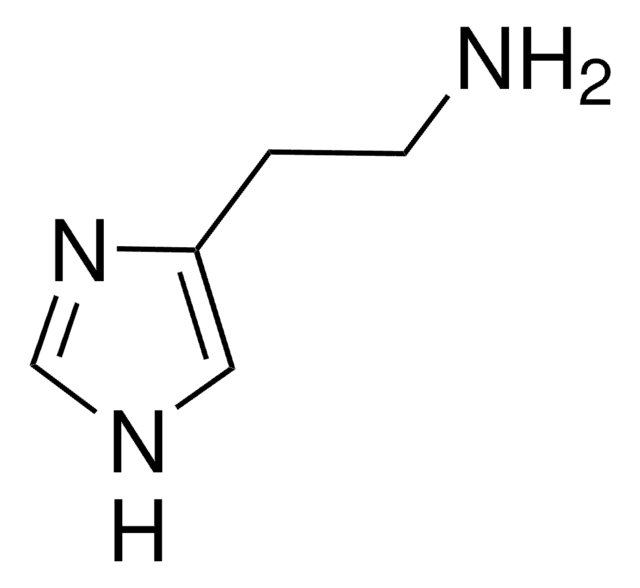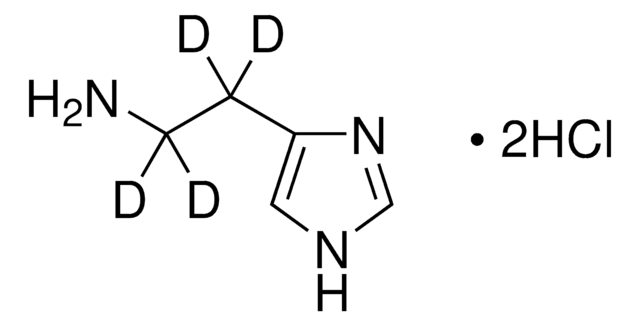Key Documents
59964
Histamine
analytical standard
Synonim(y):
2-(4-Imidazolyl)ethylamine
About This Item
Polecane produkty
klasa czystości
analytical standard
Poziom jakości
Próba
≥97.0% (TLC)
≥97.0% (anhydrous basis, NT)
okres trwałości
limited shelf life, expiry date on the label
metody
HPLC: suitable
gas chromatography (GC): suitable
zanieczyszczenia
≤4.0% water
kolor
white to light yellow
tw
167 °C/0.8 mmHg (lit.)
mp
83-84 °C (lit.)
format
neat
temp. przechowywania
−20°C
ciąg SMILES
NCCc1c[nH]cn1
InChI
1S/C5H9N3/c6-2-1-5-3-7-4-8-5/h3-4H,1-2,6H2,(H,7,8)
Klucz InChI
NTYJJOPFIAHURM-UHFFFAOYSA-N
informacje o genach
human ... HRH1(3269)
Szukasz podobnych produktów? Odwiedź Przewodnik dotyczący porównywania produktów
Zastosowanie
Działania biochem./fizjol.
Hasło ostrzegawcze
Danger
Zwroty wskazujące rodzaj zagrożenia
Zwroty wskazujące środki ostrożności
Klasyfikacja zagrożeń
Acute Tox. 3 Oral - Eye Irrit. 2 - Resp. Sens. 1 - Skin Irrit. 2 - Skin Sens. 1 - STOT SE 3
Organy docelowe
Respiratory system
Kod klasy składowania
6.1C - Combustible acute toxic Cat.3 / toxic compounds or compounds which causing chronic effects
Klasa zagrożenia wodnego (WGK)
WGK 3
Temperatura zapłonu (°F)
Not applicable
Temperatura zapłonu (°C)
Not applicable
Wybierz jedną z najnowszych wersji:
Masz już ten produkt?
Dokumenty związane z niedawno zakupionymi produktami zostały zamieszczone w Bibliotece dokumentów.
Klienci oglądali również te produkty
Protokoły
HPLC Analysis of Biogenic Amines on Ascentis® RP-Amide
Nasz zespół naukowców ma doświadczenie we wszystkich obszarach badań, w tym w naukach przyrodniczych, materiałoznawstwie, syntezie chemicznej, chromatografii, analityce i wielu innych dziedzinach.
Skontaktuj się z zespołem ds. pomocy technicznej











